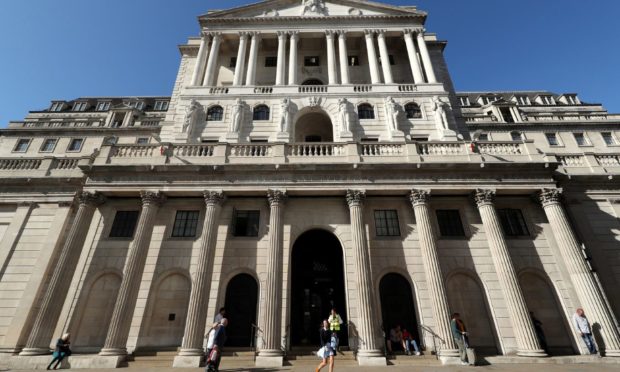Emergence from lockdown has unleashed pent up demand by consumers and lifted the UK’s economic prospects.
Positive reports from the Bank of England and IHS Markit come after pandemic restrictions caused the UK suffer the biggest drop in output for 300 years in 2020.
The Bank has forecast the economy will grow this year at its fastest pace since the Second World War while the closely-watched IHS Markit/CIPS UK Services PMI Business Activity Index found that business activity growth hit a seven-and-a-half year high in April.
Although the outlook for the economy is rosier this year, the Bank’s Monetary Policy Committee (MPC) remained cautious and voted unanimously to hold interest rates at 0.1%.
We are keeping interest rates low. This action will support households and businesses by keeping the cost of borrowing down.https://t.co/QWJDoHlg4v #MonetaryPolicyReport pic.twitter.com/Iz79tRDsyt
— Bank of England (@bankofengland) May 6, 2021
IHS said the performance of the UK service sector strengthened again during April, driven by sharp increases in business and consumer spending.
Survey respondents widely attributed the improvement in demand to looser pandemic restrictions and high levels of optimism regarding the near-term economic outlook.
Confidence in the sustainability of the recovery was also reflected in greater staff hiring, with employment growth accelerating to its fastest since October 2015.
The report revealed that hiring reached its highest level for five and a half years in April, with some firms even citing staff shortages as a factor holding back growth.
Meanwhile, the Bank predicts gross domestic product (GDP) – a measure of the size of the economy – will rebound by 7.25% in 2021 up from its previous prediction of 5% and the best year of growth since 1941.
Howard Archer, chief economic advisor to the EY ITEM Club, said that the Bank was always unlikely to raise interest rates despite rising concerns that growth could fuel inflation. And while there were signs the Monetary Policy Committee (MPC) might move to reduce stimulus, the bank was “seemingly in no hurry to tighten monetary policy”.
Our analysis of the Bank of England keeping interest rates at 0.10% & targeted stock of asset purchases at £895 billion at May #MPC meeting as it became much more optimistic about current performance & near-term outlook for #UK #economy https://t.co/bFAgHnqWpd
— Howard Archer (@HowardArcherUK) May 6, 2021
He said: “There was never any real doubt that the Bank of England’s Monetary Policy Committee (MPC) would either leave interest rates unchanged at 0.10% or maintain the targeted stock of asset purchases at £895bn.
“However, while there a unanimous 9-0 MPC vote for the interest rate decision, one MPC member – Andy Haldane – voted to reduce the asset purchase target by £50bn, reflecting his upbeat view of the economy and concerns over the upside risks to inflation.
“Overall, while the Bank England is clearly more positive about the UK economy in the near-term, the MPC also has significant uncertainties about the longer-term outlook and are seemingly in no hurry to tighten monetary policy.
“The May minutes conclude that ‘The MPC will continue to monitor the situation closely and will take whatever action is necessary to achieve its remit. The Committee does not intend to tighten monetary policy at least until there is clear evidence that significant progress is being made in eliminating spare capacity and achieving the 2% inflation target sustainably.”
